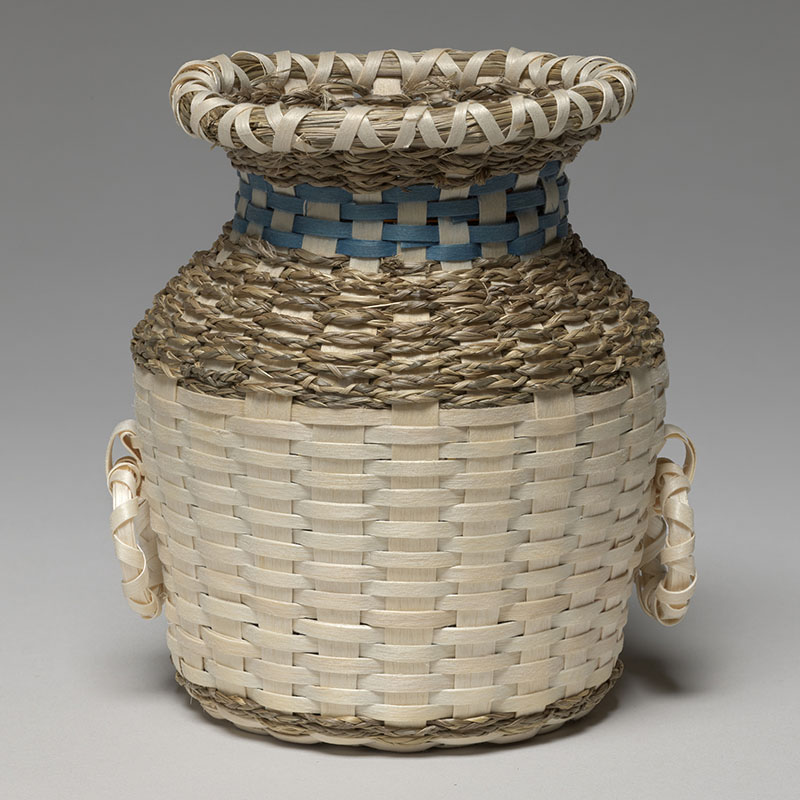B&M Baked Bean Jar Basket

| Maker | Erica Nelson Menard (Penobscot, born 1953) |
| Date of Creation | 2023 |
| Location | Northeastern United States |
| Materials | Black ash, sweetgrass, dye, and glass |
| Institution | Portland Museum of Art |
| Credit Line | Museum purchase with support from the Peggy and Harold Osher Acquisition Fund |
| Accession Number | 2023.3.1 |
| Photo Credit | Image courtesy Petegorsky/Gipe Photo |
Basketmaking plays a foundational role in the economic, cultural, and spiritual life of Wabanaki communities. The Wabanaki encompass five Indigenous nations, including the Penobscot, Passamaquoddy, Mi’kmaq, Maliseet/Wolastoqiyik, and Abenaki. Their unceded ancestral territory encompasses parts of present-day Canada and the northeastern United States, including the land on which the Portland Museum of Art sits. Created from diverse natural materials ranging from black ash splints and sweetgrass to birchbark and porcupine quills, these woven vessels hold many meanings, evoke creation stories, and connect relatives. Beginning in the 1990s, this art form underwent extensive revitalization by contemporary basketmakers following the efforts of the Maine Indian Basketmakers Alliance (MIBA), a nonprofit organization dedicated to teaching basketmaking. Today, many Wabanaki artists continue to pursue and share this important practice, producing baskets of beauty and ingenuity that carry forward messages of political sovereignty, resilience, joy, and cultural continuity. Erica Nelson Menard learned to weave ash (kʷətéwαməkʷ) and sweetgrass (wəlí-mskihkəwal) baskets through an ongoing apprenticeship with her mentor and cousin, Theresa Secord (the founding director of the MIBA). Secord utilizes basketry tools passed down from her great-grandmother—Menard’s grandmother—Philomene Saulis Nelson, a noted Wolastoqey/Penobscot weaver. Through her baskets, Menard participates in a rich continuum of this art form, kindled by her family across generations. Menard’s bean jar basket honors the practice of Wabanaki baskets woven around a glass jar of B&M baked beans, employing its rounded form as a readymade mold for the vessel. This basket form reflects a resourceful engagement with familiar items produced by the once-prolific B&M Baked Beans factory, active in Portland from 1867 to 2021. The accent of blue dye (anikəwátsíkan) around the rim represents the ocean, gesturing to the tidal nature of the basket’s sweetgrass elements as well as the B&M factory’s location overlooking Casco Bay. Menard drew inspiration and techniques for the bean jar basket from similar precedents produced by her grandmother, Philomene, with Secord’s guidance. *The bolded terms above indicate the translations of these words in the Penobscot language.

